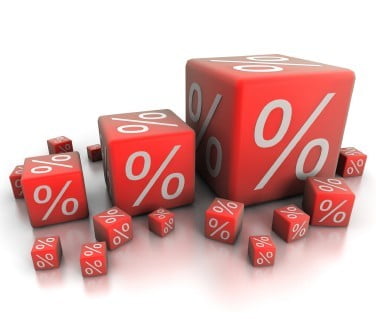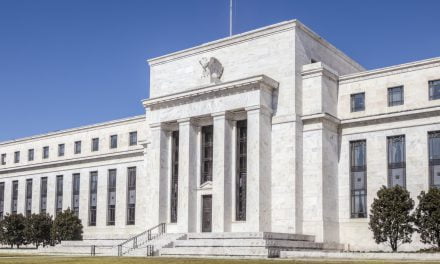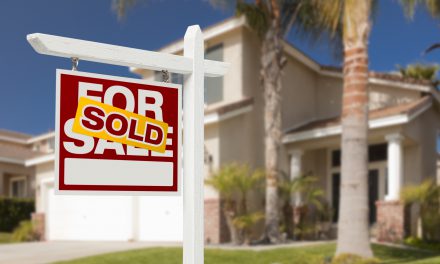Interest rates on adjustable rate mortgages (ARMs) are edging higher. What will the impact be on homeowners with ARMs, and will it spill over to the rest of the housing market?
Every month or so brings with it news of dealings by the Federal Reserve (the Fed) to balance economic growth. They do this through two main tools:
- interest rates, influenced through their key benchmark, the Federal Funds rate; and
- their portfolio of mortgage-backed bonds (MBBs), treasury holdings and other debt instruments.
The Federal Open Market Committee (FOMC) — a committee that represents the Fed — meets eight times a year to adjust their plan to keep the economy in check. This includes analyzing the strength of the employment market, the rate of consumer inflation and asset prices in the broader economy.
Measuring the economy, the Fed takes into account the fact that most economic factors have seen improvement over the previous year, with the number of Americans employed increasing 0.6% over a year earlier as of September 2017 and prices in the stock and real estate markets continuing to exceed expectations.
However, the inflation rate remains low, at just 1.7% as of September 2017, according to the Bureau of Labor Statistics. In contrast, the Fed’s target inflation rate is at least 2%.
Yet, the Fed has decided to raise interest rates anyway, to fight off the possibility of future hyperinflation. Their aim is to keep the economy from overheating and boiling over, avoiding the excess that was partly to blame for the housing crisis and 2008 recession.
Therefore, the Fed has been making use of the tools at its disposal, increasing its key interest rate every few months since December 2015 and reducing its balance sheet beginning October 2017.
Related article:
The Fed’s impact on ARMs
The Fed’s benchmark rate holds significant sway over the interest rates on ARMs. From 2009-2015, the Federal Funds rate was essentially zero. During this period, ARM interest rates were also at historic lows.
The Fed began raising their target Federal Funds rate — gradually — in December 2015. As of October 2017, the target Federal Funds rate is 1%-1.25%. The average ARM rate is around 3.2%, up from 2.8% in December 2015.
This relationship exists because the Federal Funds rate is used as the benchmark for several key interest rates that are used by banks to adjust interest rates on variable rate loans, including ARMs. Basically, changes to the Federal Funds rate influence the cost of borrowing for banks, so banks need to increase rates to continue making the same profits.
On the other hand, fixed rate mortgage (FRM) rates also tend to rise following — and sometimes in anticipation of — a Fed rate hike. But since current homeowners with FRMs are already locked into their interest rate, only new homebuyers are directly impacted. This rate action influences home prices, as homebuyers can only pay based on what they qualify for at today’s incomes and interest rates. This dynamic is called buyer purchasing power.
The average interest rate on a 5/1 ARM was 3.19% in September 2017. This is up slightly from a year earlier when it was 3.04%. For reference, the average 30-year fixed rate mortgage (FRM) rate in September 2017 was about half a percentage point higher, at 3.73%, making the ARM slightly more attractive based on its initial rate.
The road ahead for ARM holders
A homebuyer who takes out an ARM in 2017 will initially pay a low interest rate, called a teaser rate. This allows the homebuyer to qualify for more principal and make low payments for, typically, up to five years.
Then, the rate resets.
This results in a higher payment, calculated using a new interest rate based on a pre-assigned index rate and the lender’s agreed-to margin. The new rate may be multiple percentage points higher, though the rate of increase may be limited somewhat by the ARM’s cap.
Editor’s note — Technically, an ARM rate may actually decrease following a rate reset, when the index rate has fallen and the type of loan allows for a rate decrease. But the zero lower-bound rates that finally began to increase in 2015 mean that interest rates — and ARM rates — have only one direction to go in the future: up.
These upcoming upward adjustments are a major issue not just for the homeowners, but for the economy at large.
Consider an income property owner of a residential rental in Los Angeles. The investor purchased the property using a $400,000 ARM in 2015, when the teaser rate on a 5/1 ARM averaged 2.8%.
The investor pays at the teaser rate for five years, until 2020, when the ARM resets. Their initial payment of principal and interest is $1,650 a month. When the rate resets, the new interest rate is two percentage points higher, at 4.8%. Their payment rises to $2,000 a month. The following year, the rate rises another two percentage points, to 6.8%. Their new monthly payment is $2,400.
Just two years following the initial rate increase, the investor’s new monthly payment is $800 higher. The investor may either:
- attempt to refinance, which can be complicated by an owner with less income or a property that is underwater (both problems that prevented ARM owners from refinancing during the 2008 recession, compounding the foreclosure crisis);
- reduce their quality of life, cutting back on their personal housing payments or in other areas of life;
- sell the property, which only works for homes with positive equity, or for owners who don’t mind the stigma of a strategic default; or
- raise the rent, essentially passing the cost of the new higher interest rate along to the tenant.
No surprise, but the landlord is most likely to increase the rent. After all, with today’s low levels of new residential construction, demand continues to outstrip supply and landlords are in the driver’s seat.
The road ahead for everyone else
Now consider a tenant. This tenant took out a private student loan to obtain their college degree. In 2015, they graduated with a total of $21,400 in educational debt, the average amount owed by a 2015 graduate in California.
The tenant’s private student loan has a variable interest rate. Their initial teaser rate is 5%, but has increased to 7.8% in 2017, equal to the average student loan teaser rate, according to LendEDU. By 2020, their variable rate is 9%. From 2015 to 2020, their monthly payment has increased from $230 to $270, an increase of $40 per month.
$40 a month is not a big deal by itself. But imagine this tenant also has a variable rate auto loan and a variable rate credit card. Each time the Fed increases the Federal Funds rate, their payments are bumped up a bit higher. On top of all that, their landlord has a variable rate mortgage, so they can expect their rent to increase substantially.
Sure, some of these increases will be offset by wage increases. But this calculus leaves no room in a tenant’s budget for saving for a down payment. In fact, the personal savings rate was a meager 3.7% in the second quarter of 2017. At this rate of savings, it will take a tenant decades to save up enough money to qualify for a mortgage.
The future for real estate, tied to ARMs
ARMs are inherently unstable, providing instant gratification and lengthy retribution over the life of the mortgage.
The U.S. has left behind the era of falling rates, which occurred from the heights of interest rates in the 1980s through the bottom for rates in 2012. Going forward, interest rates will continue to rise for the next two-to-three decades, following a century’s old trend of 20-30 years of falling rates followed by 20-30 years of rising rates.
Further, the rise in rates won’t just impact individuals with variable interest rates. As illustrated in the above example of the tenant, variable rates impact individual balance sheets, and the larger economy. Imagine a local economy where residents are blowing more and more of their budget on higher debt payments. Tenants and homeowners alike are forced to pay more on housing. There is less money leftover to pay for goods and services and support the local economy.
Armed with this knowledge, what’s a real estate professional to do?
Ensure your clients are fully knowledgeable of the risks that ARMs present. ARMs are appropriate mortgage products for seasoned investors planning to own the property short-term. But when ARM use spreads beyond this level of investor, trouble is sure to follow.
For a recent example, look no further than 2006, when three-out-of-four homebuyers used an ARM to purchase. Five years later, when the majority of these ARMs reset, most homebuyers were underwater and with diminished incomes, and therefore unable to make the higher payments or even refinance. Foreclosure was the inevitable result, and a crisis for the nation from which some areas are still recovering.
Keep the housing market stable, and help keep ARMs where they belong: a seldom-used tool for sophisticated investors.
Related article:




















